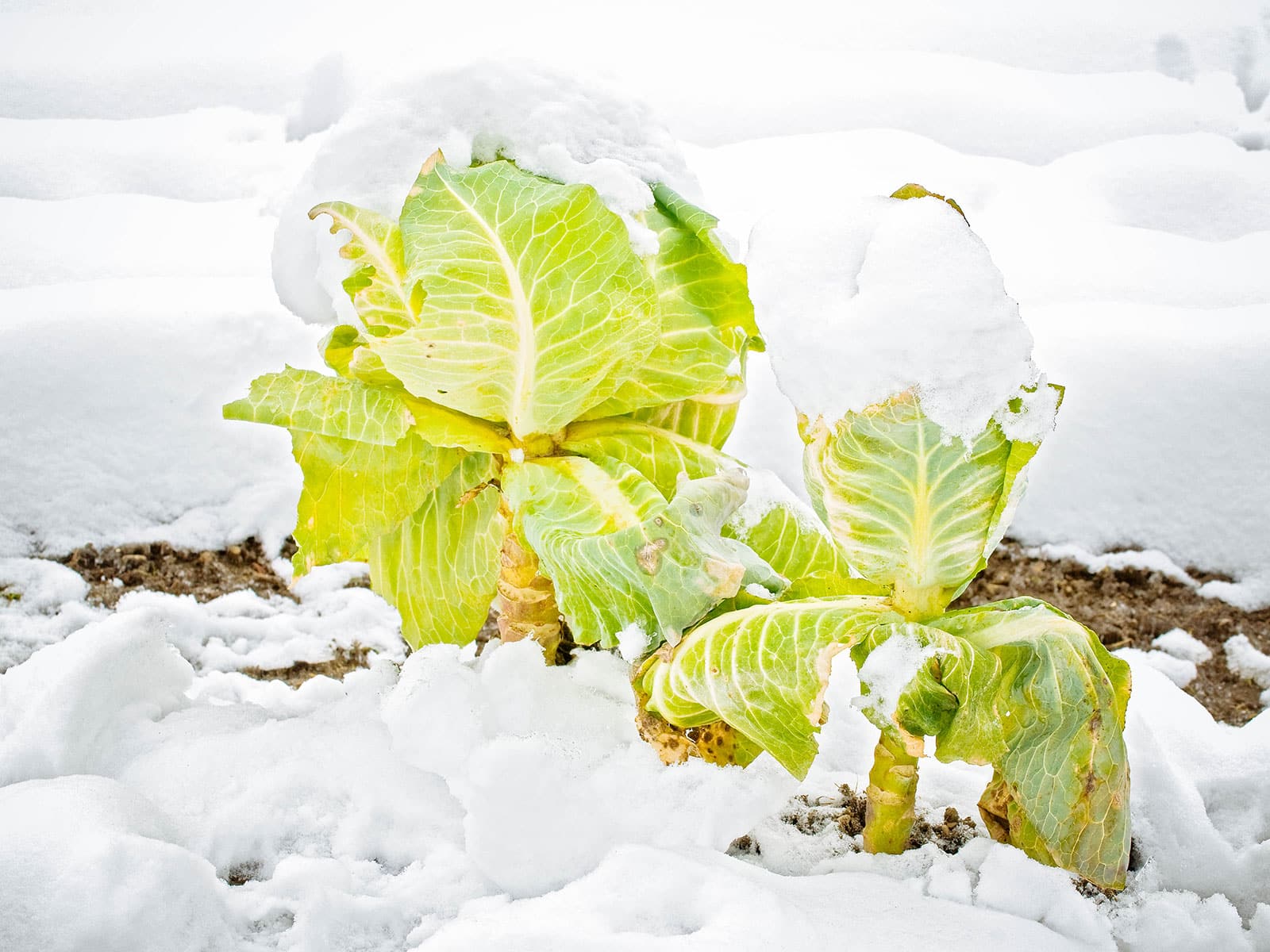As the weather turns from cold to colder and snow and ice start to accumulate on the ground, it’s easy to think you can take a break from watering your garden—at least until it warms up again, right?
Well, not quite.
Even though temperatures are dropping, your plants still need consistent water through winter, particularly if they’re newer plants that are just establishing themselves in the garden. You don’t need to water as much as you do in summer, but you can’t put the hose away just yet.
Here’s why:
Plants still need hydration in cold weather.
Your plants may be dormant or semi-dormant, but they aren’t dead. They still have some basic metabolic functions that rely on water and without adequate moisture, the root system will suffer. (I know—it might seem counterintuitive to water plants when they aren’t actively growing, but I’ve personally lost a fruit tree and a few shrubs in winter due to lack of water, not because of cold temperatures.)
The roots of perennials, biennials, and overwintering annuals are still very much alive underground, collecting water and nutrients from the soil and storing sugars and other forms of energy to help them make it through winter. This vital energy is what produces new growth in spring.

Dry soil is detrimental to roots, especially in winter.
If their roots dry out at any time of year, plants become stressed and they can’t take up the nutrients they need for healthy growth. When this happens in winter, your plants are even more susceptible to winter injury. They might appear normal when they emerge from dormancy in spring, using their stored energy, but by late spring or summer, all or parts of these plants may die as a result of their weakened root systems.
Watering before an expected frost helps insulate roots.
Near-freezing temperatures combined with watering are often cause for concern, as many gardeners worry that the wet soil will freeze and injure plant roots. But as long as you water early in the day when the temperature is at least 40°F and above, the water you give your plants will actually help protect them against frost.
Moist soil acts like a cozy blanket for roots, trapping heat and helping the root zone stay a bit warmer than the air as nighttime approaches. When you water your plants before an expected frost and cover them with frost cloth, that’s often all the protection they’ll need to survive a cold, dry winter.

Moisture in the soil helps protect plants from winter desiccation.
Winter winds can be brutal, and they’re one of the main reasons some plants don’t make it through the season. When strong winds occur, they pull moisture out of the plant’s leaves faster than it can be replaced by the roots.
This can lead to death by desiccation—and it’s entirely avoidable if you keep the soil consistently moist in winter to give your plants a fighting chance against those cold, drying winds. Just make sure the ground doesn’t stay soggy, as this can create new problems with root rot or suffocation.
What if it snows?
If you live in a climate where there’s snow cover all winter or it regularly rains, then you don’t need supplemental winter watering. The weather is doing all the work for you!
But if you live in a drier climate and a couple weeks go by without a good soaking rain, you’ll need to get out there and water your garden. Trees and larger perennials should be watered from the trunk to the drip line, and smaller plants should be watered near their crowns.

Winter watering routine
Wait until the temperature is at least 40°F and apply water from late morning to mid day so it has time to soak in before possibly freezing at night.
- Water your trees, shrubs, and other perennials when it’s been unseasonably warm and there hasn’t been any precipitation
- Water once a month if dry weather continues
- Water twice a month if it stays dry all season
The soil in some climates may freeze and thaw repeatedly over winter, and if that happens, only water when the soil feels dry. In regions that don’t get much precipitation, aim for a good deep watering each time.
How long do you need to keep watering?
In general, continue watering your garden until the ground freezes solid. Once the soil is frozen, the roots can no longer absorb water. You’ll know it’s frozen if you can’t work a shovel into the ground more than a few inches, or a soil thermometer registers at or below 32°F.
















To the writer of this blog. I am freaking out inside. All my plants of 27 years seem to be screaming me to water them. They are dying, in the firgid cold they are not really used to.
They have no water, just ice, and if they are lucky some warming temps in pm but still below freezing. I did not cover them, I never have needed to. ITs such a loss that I can avoid. I guess I will start watering lightly, plant by plant, cover by cover, in the teens, atleast I can do something, instead of watching them all die off.